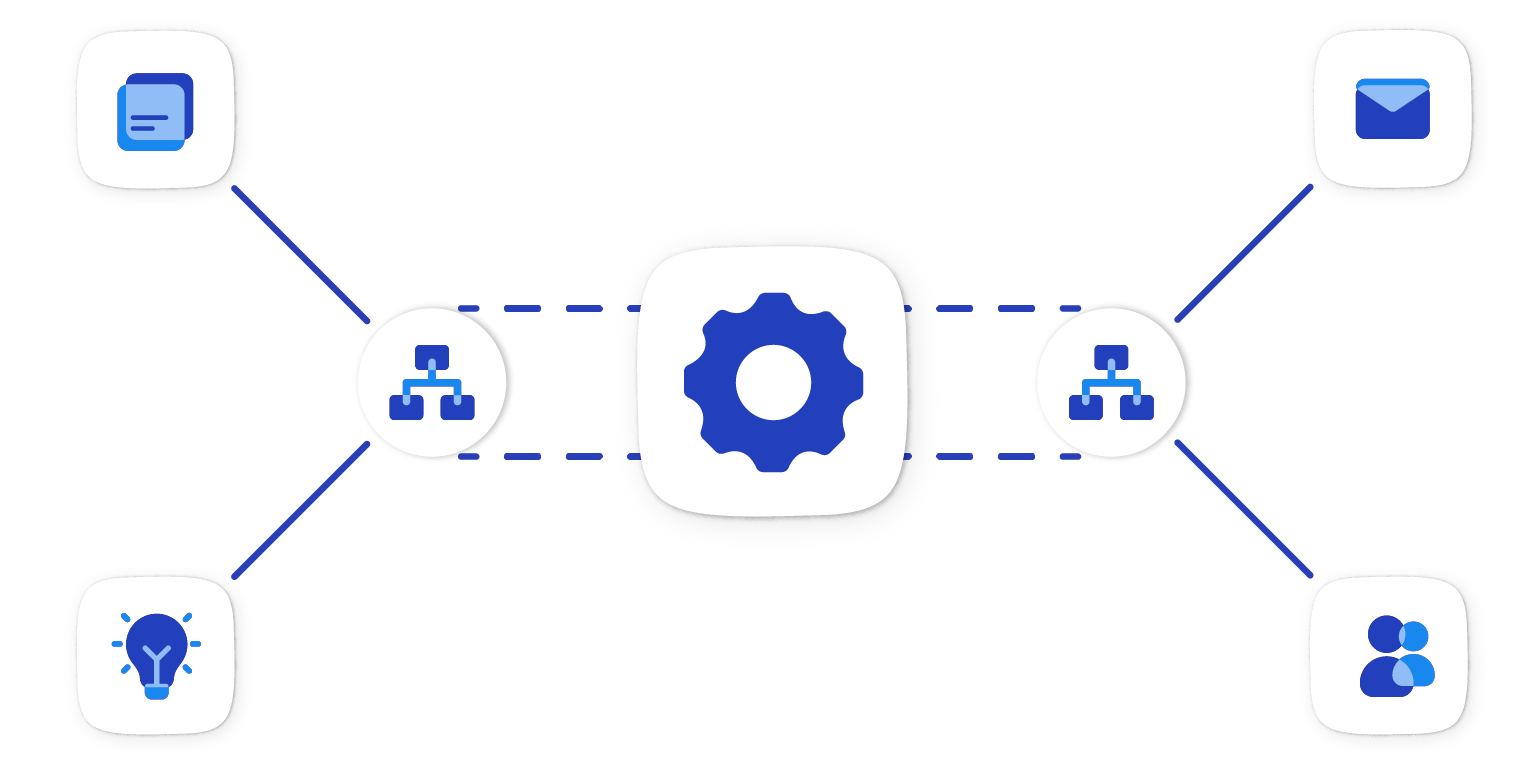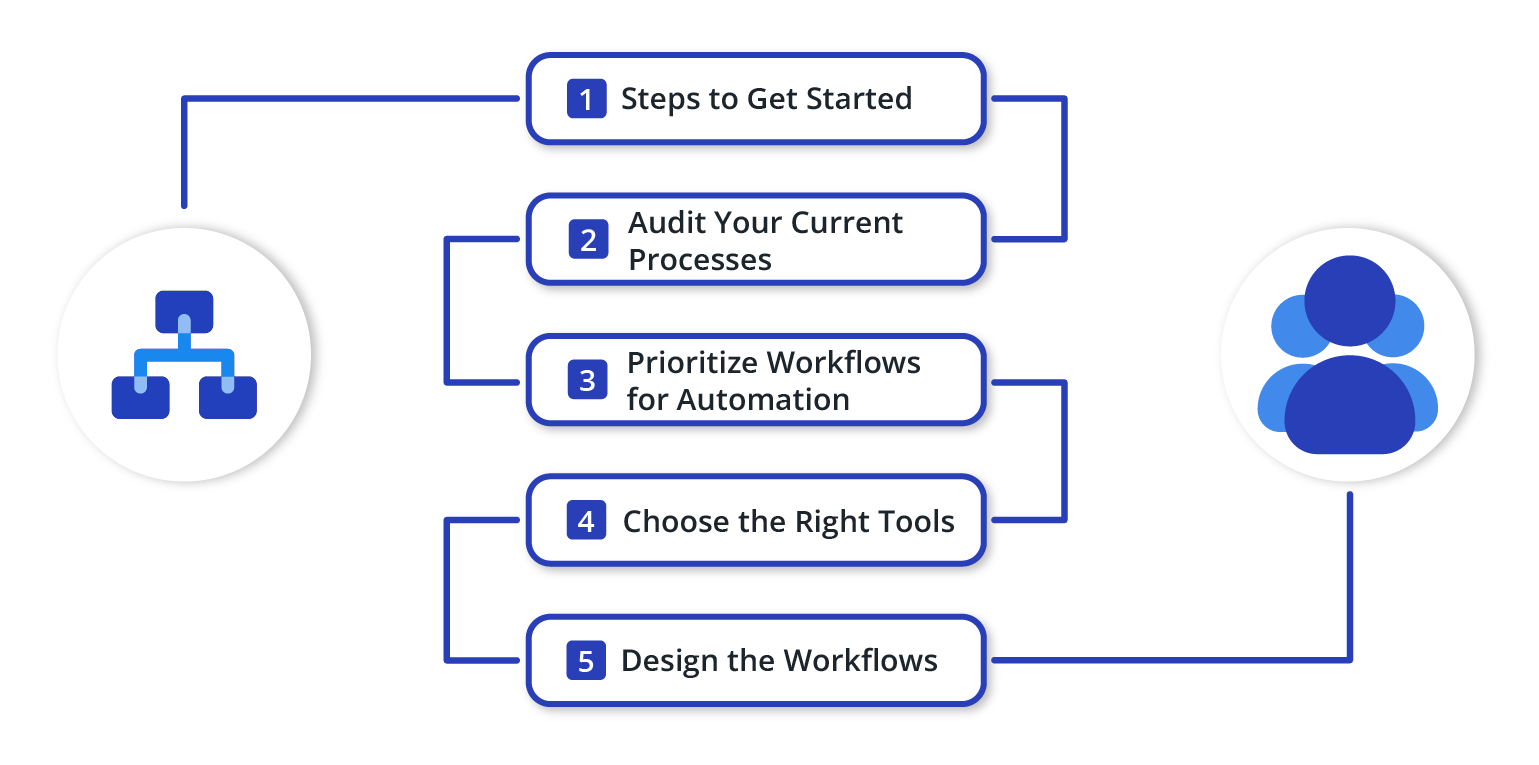As the pace of business quickens, enterprise leaders continually find ways to stay ahead of the curve. But what if the solution is not racing but streamlining the race itself?
Enter workflow automation—a tool to reshape the dynamics of daily business operations and empower leaders, managers, and entrepreneurs to drive productivity like never before.
Let’s explore this powerful tool and how it can make a big difference in your business.
What Is Workflow Automation?
Workflow automation is the use of technology to transform repetitive and manual tasks into automated steps. It’s like having a virtual assembly line where each task is seamlessly handed from one point to the next without human interference. Essentially, workflow automation is eliminating redundant and error-prone tasks that drain time and resources.
For leaders seeking a competitive edge, it’s not just doing things faster; it’s doing them smarter. With workflow automation, you ensure every process is done consistently, efficiently, and precisely. It’s streamlining those intricate, multistep tasks that require manual intervention.
The result? Faster output, fewer errors, and a team that can focus on tasks that require creativity.
How Business Process Automation Elevates Workflow Automation
Business process automation (BPA) and workflow automation might sound like industry jargon, but they simply make business tasks smoother and quicker. Let’s break them down.
Think of workflow automation as the younger sibling of BPA. While workflow automation is about making a specific task easier, like automating an email reply, business process automation is the big-picture approach. It looks at the whole journey and streamlines the entire process.
Take hiring a new employee as an example. Without automation, hiring can be long and complicated. There are contracts to sign, documents to check, training sessions to organize, and then settling the new member into the team. Each step takes time and might involve waiting, potential mistakes, or unnecessary back-and-forths.
Now, imagine if most of these steps just happened on their own. That’s what BPA does:
- Contract Signing: As soon as an employee is selected, a digital contract is sent to them. They can sign it online, and it instantly returns to the HR.
- Document Verification: Once the signed contract is received, an automated system can remind the new hire to upload the necessary documents. The system can quickly check these without someone manually going through every page.
- Training: An automated system can schedule training sessions, send reminders, and even provide online training materials.
- Team Integration: On the employee’s first day, automated emails could introduce them to their team, schedule meet-and-greets, and ensure their workstation is set up.
This is just one example. The same automation magic can work in many areas, such as handling invoices or answering customer questions. With business process automation, every step, from start to finish, is looked after, speeding up things, reducing mistakes, and ensuring nothing gets stuck or forgotten.
Benefits of Workflow Automation for Your Business
Recognizing the advantages of workflow automation could distinguish a thriving business from a surviving one. Let’s have a closer look at each benefit.
Increased Efficiency and Productivity
A study by McKinsey found that one-third of tasks in about 60% of jobs can be automated. That’s a significant portion of employee hours that can be repurposed!
Workflow automation helps employees move from repetitive tasks to roles needing human intelligence, creativity, and decision-making. Moreover, with automated workflows in place, bottlenecks become easy to identify and eliminate, ensuring an unimpeded flow of tasks.
Reduced Human Error and Costs
Manually handled tasks are susceptible to errors, whether it’s the occasional mistyped data or missed deadlines. With workflow automation, these errors are drastically reduced. Fewer errors mean less time and resources spent correcting them, leading to direct and indirect cost savings.
Better Decision-Making with Data Insights
Automated systems produce vast amounts of data. This data, when analyzed, can provide critical insights into improvement areas, optimization opportunities, and potential growth areas. Leaders can then make informed decisions backed by real-time data rather than relying on intuition alone.
How to Successfully Implement Workflow Automation in Your Enterprise
Embracing workflow automation is more than introducing new tools—it’s a cultural shift toward efficiency and continuous improvement.
Steps to Get Started
Diving headfirst into workflow automation can be tempting. But, as with any significant change, having a plan is crucial. Here’s how to begin:
Audit Your Current Processes
Before you change anything, understand what you’re currently doing. Get a clear view of all the processes in your organization. Talk to department heads, team leaders, and front-line employees. They’ll give you insights into where inefficiencies or bottlenecks occur.
Prioritize Workflows for Automation
Not all processes should be automated right away. Start with those that are repetitive, time-consuming, and prone to human error. These will give you the most value when automated.
Choose the Right Tools
Several workflow automation tools are available. Your choice should fit your business needs, budget, and technical capabilities. Consider scalability—as your business grows, your tool should adapt without breaking a sweat.
Design the Workflows
This is where the rubber meets the road. Map out each step of the automated process to ensure no gaps. Use flowcharts or specialized software to visualize the workflow. Remember, the design phase is a repetitive process; you might need a few tries to get it right.
Tips for Implementing Workflow Automation
Successfully deploying workflow automation goes beyond just choosing a tool and mapping processes. While having a structured plan is essential, the nuances and attention to detail often determine success.
Here are some tried-and-true tips that can make your journey into workflow automation smoother and more effective:
Set Clear Goals
Beyond just efficiency, understand what you want to achieve with automation. It could be speed, accuracy, or data collection. Align your project to these goals.
Train Your Team
Tools are only as good as the hands they’re in. Invest in theoretical and hands-on, comprehensive training sessions, and ensure everyone understands the new tools and processes. This ensures a smooth transition and maximizes the benefits of automation.
Review Regularly
Technology and business need to evolve. Regularly revisit your automated workflows to ensure they remain relevant and efficient.
How Kizen Empowers Enterprises with Workflow Automation Solutions
Kizen takes the crown for enterprise workflow automation software, delivering not just solutions, but a forward-thinking vision.
Here’s what sets us apart from legacy solutions using last-generation technology:
The Pinnacle of Customization: Custom Enterprise Neural Networks
Imagine a world where all your critical technology and data are interwoven seamlessly. With Kizen, this isn’t just a vision—it’s our reality. Our unique ability lies in building, connecting, and deploying an enterprise neural network tailored just for you to ensure the integration of 100% of your critical technology and data.
What’s the end game? A radical transformation in automation and collaboration across teams. By bridging the tech gaps, businesses can unlock an unmatched ROI from their tech stack, making every investment count.
Time Is Money: Kizen’s Quick Deployment Edge
In business, agility is a competitive advantage. While competitors offer months or years-long deployment timelines, Kizen shifts gears to the fast lane. How? We demonstrate tangible value in weeks, not months. Even in complex, highly regulated industries, implementation takes less than six months from start to finish.
The Future Is Modular: Kizen’s Revolutionary Infrastructure
Kizen is built on a proprietary modular infrastructure. This foundation is a game-changer—it’s designed to handle the deluge of modern data and seamlessly integrate with advanced technologies.
While legacy technology providers couldn’t fathom today’s tech evolution, Kizen was built with the future in mind. This doesn’t just provide vastly improved capabilities in the present but ensures that businesses remain resilient amid the unpredictable waves of future tech evolutions.
Beyond Boundaries: Kizen’s No-Code Mastery
Kizen makes adjusting and deploying new apps and functionality a breeze with our intuitive no-code drag & drop tools. Regardless of whether you know how to read and write code, anyone in your organization can perform advanced data queries, build and deploy apps, and much more—all without touching a single line of code.
Kizen isn’t just another tool in the enterprise technology toolbox; it’s a trailblazer. As you navigate the complex waters of digital transformation, Kizen stands by you, ready to redefine the boundaries of efficiency and productivity.
The Unparalleled Power of Workflow Automation
Throughout our discussion, it’s clear that the potential of workflow automation goes beyond just cutting costs or speeding up processes. It’s transforming how enterprises operate, paving the way for enhanced productivity, streamlined tasks, and unparalleled growth opportunities.
As the business world evolves, those who adopt these advancements will undeniably lead the charge, while those who hesitate may struggle to keep up. As an enterprise leader, the question isn’t whether you should adopt workflow automation. It’s how soon you can.
But like any transformative journey, the road to effective workflow automation requires the right partner. Kizen fits that role. With its cutting-edge AI-driven solutions and deep understanding of enterprise needs, Kizen is ready to guide businesses into the future of operations.
Take the first step toward unparalleled operational efficiency. Reach out to us today for a comprehensive consultation and assistance in your workflow automation journey.











